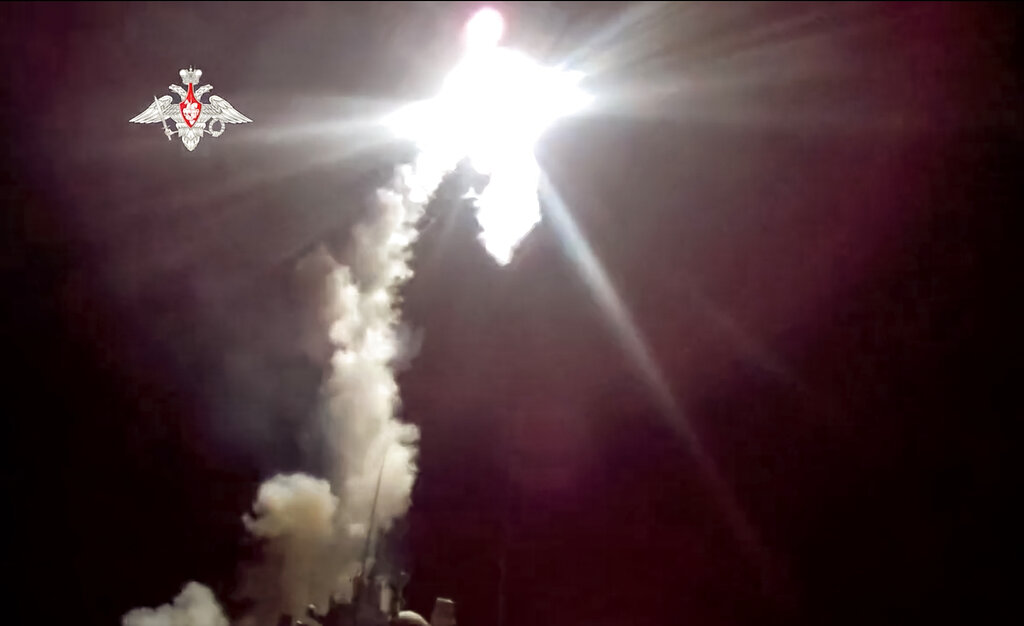THE ASSOCIATED PRESS
Russia’s navy has successfully tested a prospective hypersonic missile, the military said November 29, 2021.
The Defense Ministry said the Adm. Gorshkov frigate in the White Sea launched the Zircon cruise missile, hitting a practice target 400 kilometers (215 nautical miles) away. The launch was
the latest in a series of tests of Zircon, which is set to enter service in 2022.
Russian President Vladimir Putin has said Zircon would be capable of flying at nine times the speed of sound and have a range of 1,000 kilometers (620 miles). Putin has emphasized that its deployment will significantly boost the capability of Russia’s military. (Pictured: The Adm. Gorshkov frigate of the Russian navy fires a Zircon hypersonic missile in the White Sea.)
Zircon is intended to arm Russian cruisers, frigates and submarines. It is one of several hypersonic missiles under development in Russia. The Kremlin has made modernizing the country’s arsenals a top priority amid the tensions with the West that followed Russia’s 2014 annexation of Ukraine’s Crimean Peninsula.
The commander of the North American Aerospace Defense Command (NORAD) said the missile technology poses a threat to North American security. Speaking to Canadian government and military officials November 30, 2021, U.S. Air Force Gen. Glen D. VanHerck gave a risk assessment one day after Russia’s missile test, according to Canadian broadcaster CBC News.
“As the commander of NORAD, I think probably the most important mission I do is provide threat warning and attack assessment for both Canada and the United States, for North America,” VanHerck told a media roundtable. “Hypersonics will challenge my ability to do that going forward,” he said.
Hypersonic missiles can travel at more than five times the speed of sound and have vast ranges. A hypersonic missile can weave through the atmosphere and avoid interception. Most hypersonic vehicles can only deliver conventional warheads, but experts warn they could be capable of carrying nuclear weapons at some point.
The U.S. is conducting its own missile defense review to look at the new technology while the U.S. and the People’s Republic of China are both testing hypersonic weapons.
IMAGE CREDIT: THE ASSOCIATED PRESS

